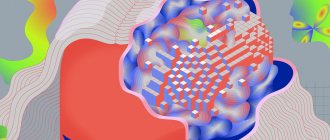Memory, consciousness, a sense of one's own identity and awareness of its continuity in the human psyche are united. But it may happen that some of the above become independent, isolated from the stream of consciousness, that is, a mental disorder occurs. It is called dissociative identity disorder.
Memory lapses, loss of a sense of personal identity, and impaired consciousness lead to a split in this very personality. A person seems to be inhabited by several persons at once (there may be more than two) of different gender, age, religion, social status, and each with its own character.
This type of multiple personality disorder is a fairly rare mental disorder. Although it is included in the ICD, there is ongoing debate in the medical psychiatric community about this disease, and in some countries specialists do not want to recognize it.
Historical excursion and modern criticism
The first description of dissociative identity disorder is found in papers dating back to the 16th century. In the writings of the famous Swiss philosopher, alchemist and physician Paracelsus, there is an entry in which a woman is mentioned who believed that someone was periodically robbing her. In the end, it turned out that she was spending the money herself, that is, her own second personality was unknown to her. The lady had no idea about its presence.
In the 19th century, Pierre Marie Felix Janet, a French physician and psychologist, drew attention to the ability of a set of ideas to separate from a person’s personality and exist outside of his consciousness, completely independently. However, the doctor managed to bring her back using hypnosis.
Janet introduced the concept of “dissociation”, taking as a basis the Latin word dissociare (to separate from society). This is the name given to the unconscious process of separating thinking from consciousness and the existence of the former autonomously. It can be explained more simply: a person cannot decide on his opinion about any situation, he has conflicting opinions on this matter, he simultaneously agrees and disagrees - he splits into two.
Currently, with a very rare manifestation of dissociative identity disorder, interest in it is enormous due to the “promotion” of the topic in sensational literary works and cinema products. The documentary novel “The Many Minds of Billy Milligan” by Daniel Keyes, written based on the real story of a criminal - a rapist and murderer, in whom 24 personalities “coexisted” at once, received a great response. A film was also made based on this work. Another popular blockbuster on the same topic is “Fight Club.”
It is this kind of “popularization” of mental disorder that prompted many experts to believe that its occurrence is iatrogenic. Simply put, there is an opinion that psychotherapists themselves actively advertise multiple personality disorder in order to attract clientele and increase their own income.
A number of experts also doubt the clinical reliability of the fact that the described cases of the disorder are directly related to crimes and are directly related to forensic psychiatric examination and jurisprudence.
But, nevertheless, many psychiatrists believe that dissociative identity disorder is a very serious problem, a process of collapse, destruction of the integrity of the individual. Sometimes it is called a striking disorganization of the personality on a global scale or its splitting.
Related Issues
Antisocial psychopaths are impatient and irritable. It is difficult for them to voluntarily keep their attention on one thing. As a result, they have significant difficulties with learning and are not inclined to systematic work. They may often criticize others, but never themselves; prefer to attribute their mistakes to circumstances and others. Sociopaths are also often unaware of their emotions, especially negative ones, and essentially experience them. This is due to the fact that they have a highly developed “reaction”.
The personality traits of antisocial psychopaths often lead them to commit crimes and, as a result, end up in prison, but they never regret committing a crime, only that they got caught doing it. They can also realize themselves as leaders of sects, criminal and fraudulent groups. They often become drug addicts or abuse alcohol, but not so much because they avoid reality, but because they indulge their desires.
Symptoms
This mental disorder is manifested by the following symptoms:
- The dissociative flight reaction is a dissociative fugue. The person behaves quite normally, but acquires character traits that are unusual for him and moves away from his place of residence. Unconscious memory loss (partial or complete) occurs. A person may suddenly leave work, behave differently than usual, respond to different names and not understand what is happening. This abnormal condition passes quickly, and the return to normal is rapid.
- Dissociative amnesia - under the influence of stress or a traumatic event, the memory suddenly disappears, but the individual understands this. His consciousness “works” normally and he is able to perceive any new information.
- Dissociative identity disorder. A personality is split into several, each having its own name, character, thinking, psychological properties, behavior, and nationality. Each of them periodically “commands” a person, personalities change each other without any reason or systematicity. The individual does not realize or feel such replacements, does not remember what happened to him in one form or another.
- Depersonalization disorder - a person seems to observe his body and mental processes in it from the outside. The surrounding world seems colorless, unreal (derealization), and parts of the body are of incomprehensible sizes, the sense of time is lost. The individual feels like he is a robot and is tormented by anxiety and depression.
- Derealization without depersonalization.
- Trance is a violation of consciousness, there is no reaction to external stimuli. This is how children react to trauma or violence. Common to trans mediums during a seance and to pilots during a long flight. It is also observed in a number of cultures, such as excitement and rage, memory lapses, and strange actions, for example, among the Malays and Eskimos (Amok, Piblokto).
- Ganser syndrome - deliberately incorrect answers to the simplest questions (faint speech), simulation of a severe mental illness. Sometimes accompanied by amnesia, loss of orientation, and perception disorders. Common among male prisoners.
If you notice such signs in yourself or in your relatives, you should contact a psychiatrist or psychologist. Treatment must be carried out in a timely manner, as complications are possible:
- prolonged depression;
- suicide attempts;
- severe headaches;
- self-harm;
- problems with eating;
- sexual dysfunction;
- anxiety disorders;
- drug addiction or alcoholism;
- nightmares, sleepwalking, insomnia.
What are the reasons for bifurcation
Through dissociation, the mind is able to separate specific memories and thoughts. They remain forever: they do not disappear, but unexpectedly emerge in the human consciousness, “revived” by triggers, that is, triggering mechanisms. These can be events and objects that surrounded the individual at the time he received mental trauma.
Complex dissociations arise due to a combination of the following reasons that occur in childhood:
- the influence of relatives with dissociative disorder;
- natural ability to dissociate;
- frequent cases of psychological or sexual violence, severe stress, harsh treatment;
- lack of protection, support, consolation from the cruelty of loved ones.
A child is not born immediately with a sense of complete identity, but his personality is established through a variety of influences and life experiences. The baby has no experience and no ways to overcome problems, and if the baby in difficult situations does not receive care and attention, as well as the protection of his parents, he displaces negativity from the sphere of his consciousness. This form of defense is destructive and leads to dissociative disorder.
It is worth making a reservation: the accuracy of memories of childhood, or rather, of cases of abuse during that period, and their influence on the development of dissociative identity disorder has become the cause of heated debate and litigation. The fact is that little has been studied yet about how information is stored in the brain, how to restore it and interpret it correctly.
Various forms of this mental disorder also develop in people who have suffered man-made disasters, natural disasters, robbery attacks, war, serious accidents, torture, or who participated in hostilities. Patients with mental problems resulting from diseases of internal organs, post-traumatic stress, and those who have been subjected to intense forced suggestion are also at risk.
A passion for special drugs - psychedelics - can also lead to personality stratification. This was discovered in the fifties of the 20th century during scientific experiments with these means. Their goal was to create a model of schizophrenia and find ways to treat it. As a result, some of the volunteers had such a split personality that it was no longer possible to return them to their original state.
Summarizing all of the above, we can say: personality disorder, its duality, is formed due to the presence in the past or present of a number of unfavorable factors, the most significant of which are:
- mental trauma;
- intolerable stressful situations;
- the ability to eliminate negative memories from consciousness;
- easy suggestibility;
- perceiving something happening as happening to someone else is a defense mechanism, dissociation.
However, split personality is a rather diverse process. Its presence is not at all an accurate indication that a person has a mental illness.
Moderate or mild dissociation may result from:
- lack of sleep for a long time;
- severe stress;
- receiving a dose of so-called “laughing gas” (nitrous oxide) as an anesthetic during dental surgery;
- passion for the plot of a film or book;
- minor accident;
- hypnosis
Dissociative experiences can be experienced in a trance state, for example during a religious ceremony. This phenomenon is also common during individual or group meditations and autogenic training.
Diagnostics
ICD-10
A personality disorder, usually characterized by a gross discrepancy between behavior and prevailing social norms, characterized by the following (diagnosed when the general diagnostic criteria for personality disorder meet three or more criteria):
- a) callous indifference to the feelings of others;
- b) a rude and persistent position of irresponsibility and disregard for social rules and responsibilities;
- c) inability to maintain relationships in the absence of difficulties in their formation;
- d) extremely low ability to withstand frustration, as well as a low threshold for the discharge of aggression, including violence;
- e) inability to feel guilty and benefit from life experiences, especially punishment;
- f) a pronounced tendency to blame others or put forward plausible explanations for one’s behavior, which leads the subject to conflict with society.
As an additional symptom, constant irritability may occur. In childhood and adolescence, conduct disorder may confirm the diagnosis, although it is not necessary.
Note: For this disorder, it is recommended to consider the balance of cultural norms and regional social conditions to determine the rules and responsibilities that are ignored by the patient.
Included:
- sociopathic disorder;
- sociopathic personality;
- immoral personality;
- antisocial personality;
- antisocial disorder;
- antisocial personality;
- psychopathic personality disorder.
Excluded:
- behavioral disorders (F91.x);
- emotionally unstable personality disorder (F60.3-).
DSM-IV and DSM-5
To diagnose antisocial personality disorder according to DSM-IV-TR and DSM-5, in addition to the general criteria for a personality disorder, the presence of three or more of the following points is necessary:
- Inability to conform to social norms and respect laws, manifested in their systematic violation, leading to arrests.
- Hypocrisy, manifested in frequent lies, use of pseudonyms, or deception of others in order to gain profit.
- Impulsivity or inability to plan ahead
- Irritability and aggressiveness, manifested in frequent fights or other physical confrontations.
- Taking risks without taking into account the safety of yourself and others.
- Consistent irresponsibility, manifested by repeated failure to maintain a particular work schedule or meet financial obligations.
- Lack of remorse, manifested by rationalizing or indifference to harming others, mistreating others, or stealing from others.
According to criterion B, this diagnosis is made only to adults. Criterion C - There must be evidence of the same symptoms present before the age of 15 years. Antisocial behavior should not only be observed during episodes of schizophrenia or mania.
Modern psychiatry
Now dissociative disorders are understood as a whole group of mental disorders, which includes the following pathological conditions:
- Psychogenic (dissociative) fugue is the loss of personal identity and the emergence of another. The phenomenon is quite rare. It is characteristic of persons with schizoid disorder.
- Psychogenic amnesia (some memories are inaccessible to consciousness). The most common form. With clear consciousness, memory suddenly disappears, and the person is aware of it. It recovers on its own after some time.
- Dissociative identity disorder is the most severe form. It can begin in childhood or adolescence, and appears most often in young people, especially women.
In this case, the manifestation of any form of the disease can suddenly stop. This usually happens if the impetus for a dissociative disorder was a traumatic situation.
According to ICD-10, this disease is divided into the following subtypes:
- fugue;
- convulsions;
- amnesia;
- stupor;
- loss of sensory perception;
- movement disorders;
- convulsions;
- obsession and trance.
To separate such conversion disorders from other mental pathologies, there is a special criterion - the presence of integrity in the patient between the following components:
- your feelings;
- memory of one's own history;
- ability to control one’s motor function;
- awareness of oneself as a person.
Such integrity may be broken partially or completely.
How can we help?
| If you have discovered some of the described symptoms, this may indicate the development of a mental disorder. In this case, it is worth contacting a psychiatrist for diagnosis and initiation of timely treatment. In addition to face-to-face appointments , we offer a remote consultation , which is not inferior in quality to a personal meeting. Thus, you can receive qualified assistance from a high-level specialist, no matter where you are. |
Our clinic, near the Eastern Administrative District of Moscow, in Reutov, employs specialists who have extensive experience in treating mental disorders. We use the most modern and advanced techniques, guided by the principles of evidence-based medicine. Effective assistance and confidentiality of information constituting medical confidentiality are guaranteed.
How to make a diagnosis
When diagnosing dissociative identity disorder, a specialist must immediately rule out organic brain damage; for this, magnetic resonance imaging, computed tomography, and electroencephalography are performed. It is necessary to exclude:
- delirium (impaired consciousness);
- mental retardation;
- amnesia after surgery, trauma, concussion;
- somatoform (psychosomatic) disorders;
- dementia;
- temporal lobe epilepsy;
- schizophrenia;
- amnestic syndrome;
- bipolar disorder;
- influence of psychotropic substances and alcohol;
- borderline personality disorder;
- normal simulation;
- neoplasms of various nature.
Dissociative disorder is confirmed by the presence of several personality states that differ from each other and have their own pattern of behavior, perception of the environment, etc. At least two of these identities alternately receive full control of the patient. The patient cannot remember any personal information and this is not at all forgetfulness.
If the patient is a child, then one cannot speak of a diagnosis of “multiple personality disorder” if he talks about imaginary friends or is talking about a fantasy game. The latter also applies to adults, since split personality in this case is a feature of the psyche to react in this way to certain life situations.
To make a diagnosis, patient observations and special questionnaires are used. Hypnosis or the introduction of the so-called “truth serum” - amytal-caffeine disinhibition - can be used. Both of these make it possible to immerse a person in a euphorically relaxed state in which his hidden subcortical structures are “revealed.” He tells about himself what he deliberately hid or what was inaccessible due to psychogenic amnesia.
Literature
- McWilliams, Nancy. Psychoanalytic diagnosis: Understanding personality structure in the clinical process = Psychoanalytic diagnosis: Understanding personality structure in the clinical process. - Moscow: Class, 1998. - 480 p. — ISBN 5-86375-098-7.
- Byrne, Eric. Introduction to psychiatry and psychoanalysis for the uninitiated = A Layman`s Guide to Psychiatry and Psychoanalysis (1968). - Minsk: Potpourri, 2006. - 528 p. — 5,100 copies. — ISBN 978-985-15-0236-9.
- Psychopathy (specific personality disorders) - treatment, diagnosis, symptoms (Russian) (html) (inaccessible link - history). MedicineLib.ru. Retrieved July 6, 2009. Archived from the original on May 15, 2007.
- Bednenko, Galina. Psychopathy (sociopathy) in culture and everyday life (Russian) (html). MAAP.ru. Retrieved July 6, 2009. Archived from the original on May 19, 2012.
- Robert D. Hare. Devoid of conscience. The frightening world of psychopaths = Without Conscience. The disturbing world of the psychopaths among us / translation by B. L. Glushak. - Williams, 2007. - 288 p. — 5000 copies. — ISBN 978-5-8459-1103-2.
Treatment tactics
This process should be carried out by a specialist experienced in treating this disorder. Its task is to develop a set of measures that would alleviate the symptoms of the disease, improve the patient’s well-being, restore the integrity of the patient’s psyche, and consolidate a single identity. It is important that nothing harms the person.
There are no medications that can cure dissociative identity disorder, but it is quite possible to eliminate individual symptoms with their help. So, antidepressants and tranquilizers will help relieve depression, excessive activity or anxiety. But you should be extremely careful with pharmaceuticals - people with this disorder become addicted to such medications very quickly.
The main method of treatment is psychotherapy:
- insight-oriented;
- family;
- group;
- cognitive;
- rational;
- hypnosis.
Any type of psychotherapy has the task of changing the patient’s beliefs, stereotypes and inappropriate thinking. Specialists in the field of behavioral psychology act as trainers of the patient’s consciousness, trying to reproduce all possible traumatic situations and teach the patient to react correctly to them.
Hypnosis makes it possible to bring existing multiple personalities into one and get rid of depressing memories. Such work must be very delicate, like jewelry, since the slightest mistake can seriously harm.
Insight-oriented psychodynamic therapy is the work of a specialist with all the personalities of the patient. The psychiatrist accepts each of them, treats everyone with equal respect and gives no preference to anyone. This process usually lasts more than one year.
It is impossible to completely cure dissociative multiple identity disorder, so it is considered chronic and very severe. The whole point is that each person, in turn, can suffer from his own mental disorder, including dissociative one.
Patients with dissociative flight (fugue) have much better prospects - recovery occurs quite quickly, as in the case of dissociative amnesia. However, the latter can become chronic and then the prognosis is not so rosy.






